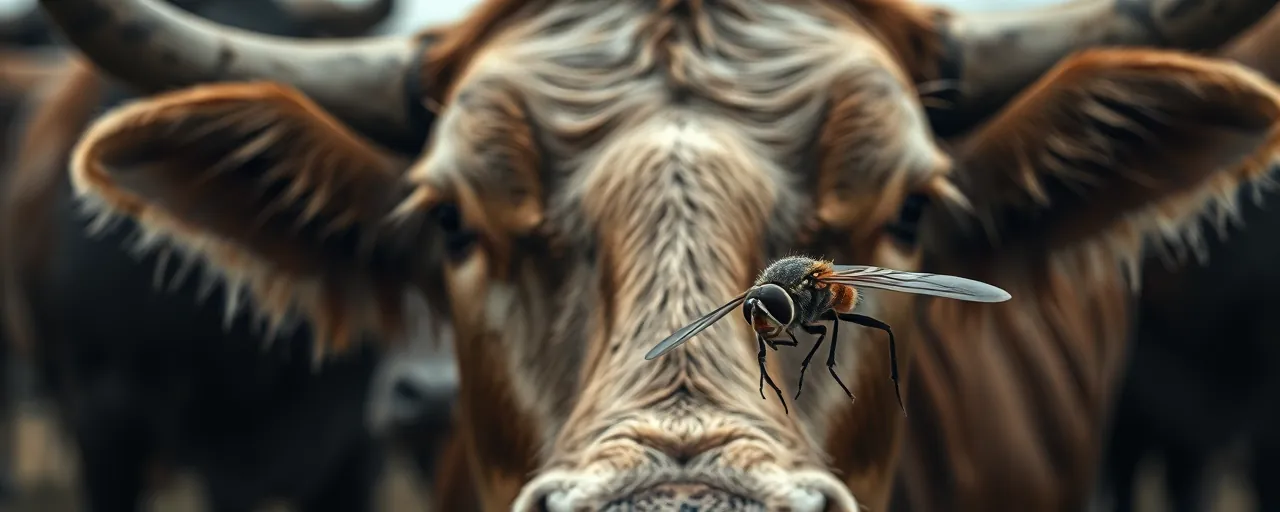A Growing Threat at the Border
A parasitic fly, the New World Screwworm, is stirring tension between the United States and Mexico. This pest, which burrows into the flesh of warm-blooded animals, can devastate livestock, wildlife, and even humans if left unchecked. Its recent resurgence in southern Mexico has prompted urgent calls for action, but bureaucratic hurdles are complicating a joint response.
The U.S. Department of Agriculture, led by Secretary Brooke Rollins, issued a stern letter on April 26, 2025, to Mexican authorities. The letter demanded the removal of restrictions on U.S. aircraft and customs duties on eradication equipment, warning that failure to comply by April 30 could lead to a halt on imports of Mexican cattle, bison, and horses. The move underscores the high stakes for both nations’ agricultural sectors.
This isn’t the first time the screwworm has tested U.S.-Mexico relations. Decades ago, the two countries worked together to eradicate the pest, a feat hailed as a triumph of cross-border collaboration. Yet, the current standoff reveals how fragile such partnerships can be when faced with logistical and diplomatic challenges.
The Economic Stakes
The New World Screwworm poses a dire threat to agriculture. In the U.S., invasive pests already cost the industry billions annually, with screwworm outbreaks historically causing losses up to $100 million in affected regions. A single infestation can slash livestock productivity, inflate veterinary costs, and disrupt supply chains, hitting farmers and consumers alike.
Mexico’s livestock sector, a key supplier to the U.S., faces similar risks. In late 2024, U.S. import restrictions on Mexican cattle, prompted by screwworm concerns, cut imports by 170,000 head, tightening supply for American feedlots and raising beef prices. The economic ripple effects underscore the need for swift, coordinated action to contain the pest before it spreads further north.
Beyond domestic impacts, the screwworm threatens the $60 billion U.S.-Mexico agricultural trade. If the pest reaches the U.S. border, trading partners could impose bans, further straining markets. Both nations have a vested interest in containment, yet disagreements over operational details are stalling progress.
A History of Cooperation
The U.S. and Mexico have a long history of tackling transboundary pests together. In the mid-20th century, they pioneered the sterile insect technique, releasing billions of infertile flies to collapse screwworm populations. By the 1990s, the pest was eradicated from North America, saving U.S. producers an estimated $796 million annually and boosting bilateral trade.
This success hinged on shared funding, technical expertise, and open borders for equipment and personnel. Joint commissions and facilities, like the fly production plant in Chiapas, symbolized the partnership’s strength. However, recent restrictions by Mexico on U.S. aircraft and customs duties on eradication tools signal a departure from that spirit of collaboration.
Current Challenges and Perspectives
Mexican authorities have cited sovereignty and administrative concerns for limiting U.S. aircraft and imposing duties. These restrictions, while rooted in national policy, have delayed the release of sterile flies, allowing the screwworm to spread. U.S. officials argue that every day of delay heightens the risk to both countries’ livestock industries.
Advocates for strong border controls in the U.S. back the threat of import restrictions, viewing them as a necessary tool to protect domestic agriculture. They point to the catastrophic potential of a screwworm outbreak and the need for decisive action. Conversely, supporters of open trade warn that such measures could destabilize markets, raise costs, and strain diplomatic ties, urging a focus on joint solutions.
International pest control experts emphasize that cooperation is the only viable path. Programs like the Pan-African PPR initiative show that multi-country efforts, backed by transparent communication and equitable cost-sharing, can yield results. Yet, achieving this in the U.S.-Mexico context requires navigating bureaucratic red tape and aligning national priorities.
Looking Ahead
The April 30 deadline looms as a critical juncture. If Mexico lifts restrictions, joint eradication efforts could regain momentum, protecting livestock and stabilizing trade. If not, U.S. import bans could escalate tensions, with economic fallout for farmers and consumers on both sides of the border.
The screwworm crisis is a stark reminder of the interconnectedness of global agriculture. Containing transboundary pests demands trust, shared resources, and a willingness to prioritize collective good over short-term national interests. As the U.S. and Mexico navigate this challenge, their ability to rebuild a unified front will shape the future of their agricultural partnership.
